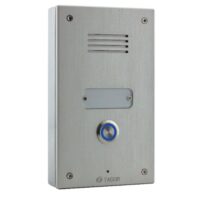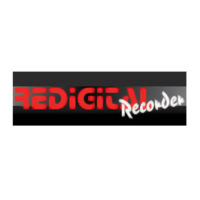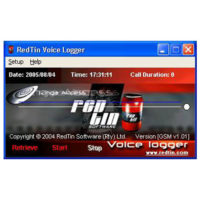ISDN Integrated Services Digital Network
ISDN Integrated Services Digital Network is a type of circuit switched telephone network system, designed to allow digital transmission of voice and data over ordinary telephone copper wires, resulting in better quality and higher speeds than available with analog systems. More broadly, ISDN is a set of protocols for establishing and breaking circuit switched connections, and for advanced call features for the user. The English term is a “backronym”, thought better for English-language advertisements than the original, “Integriertes Sprach- und Datennetz” (German for “Integrated Speech and Data Net”).
 In a video conference, it provides simultaneous voice, video, and text transmission between individual desktop videoconferencing systems and group (room) videoconferencing systems.
In a video conference, it provides simultaneous voice, video, and text transmission between individual desktop videoconferencing systems and group (room) videoconferencing systems.
Integrated Services Digital Network
* Integrated Services refers to ISDN’s ability to deliver at minimum two simultaneous connections, in any combination of data, voice, video, and fax, over a single line. Multiple devices can be attached to the line, and used as needed. That means an ISDN line can take care of most people’s complete communications needs, without forcing the purchase of multiple analog phone lines at a much higher transmission rate.
* Digital refers to its purely digital transmission, as opposed to the analog transmission of plain old telephone service. If you’re using an analog telephone modem for Internet access at this moment, your Internet service provider’s modem has converted this site’s digital content to analog signals before sending it to you, and your modem converts those signals back to digital when receiving (the same thing happens with every keystroke and mouse click you transmit). When you connect with ISDN, there is no analog conversion. ISDN transmits data digitally, resulting in a very clear transmission quality. There is none of the static and noise of analog transmissions that can slow transmission speed.
* Network refers to the fact that ISDN is not simply a point-to-point solution like a leased line. ISDN networks extend from the local telephone exchange to the remote user and include all of the telecommunications and switching equipment in between.
TYPES OF ISDN:
There are three ISDN implementations. Basic rate interface (BRI) – also Basic rate access (BRA) – consists of two B channels, each with bandwidth of 64 kbit/s, and one D channel with a bandwidth of 16 kbit/s. Together these three channels can be designated as 2B+D. Primary rate interface (PRI) – also Primary rate access (PRA) – contains a greater number of B channels and a D channel with a bandwidth of 64 kbit/s. The number of B channels for PRI varies according to the nation: in North America and Japan it is 23B+1D, with an aggregate bit rate of 1.544 Mbit/s (T1); in Europe and Australia it is 30B+1D, with an aggregate bit rate of 2.048 Mbit/s (E1). Broadband Integrated Services Digital Network (BISDN) is another ISDN implementation and it is able to manage different types of services at the same time. It is primarily used within network backbones and employs ATM.
Another alternative ISDN configuration can be used in which the B channels of an ISDN basic rate interface are bonded to provide a total duplex bandwidth of 128 kbit/s. This precludes use of the line for voice calls while the internet connection is in use.
Using bipolar with eight-zero substitution encoding technique, call data is transmitted over the data (B) channels, with the signalling (D) channels used for call setup and management. Once a call is set up, there is a simple 64 kbit/s synchronous bidirectional data channel between the end parties, lasting until the call is terminated. There can be as many calls as there are data channels, to the same or different end-points. Bearer channels may also be multiplexed into what may be considered single, higher-bandwidth channels via a process called B channel bonding.
The D channel can also be used for sending and receiving X.25 data packets, and connection to X.25 packet network, this is specified in X.31. In practice, X.31 was only commercially implemented in France and Japan.
Internet access methods
Dial-up • ISDN • DSL • Cable • Wi-Fi • Satellite • Optical fiber • Power-line Internet




